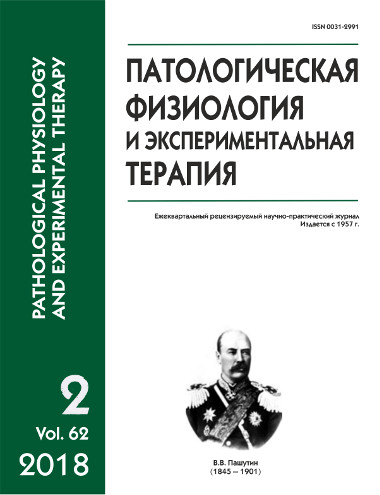The first experience of using extracorporeal magnetic stimulation in the treatment of anal sphincter failure
DOI:
https://doi.org/10.25557/0031-2991.2018.02.98-106Keywords:
anal sphincter failure; sphincterometry; extracorporeal magnetic stimulation, anal electrostimulation; tibial neuromodulationAbstract
Aim. Since clear algorithms for conservative treatment of anal incontinence are unavailable while advantages of the multimodal therapy have been proven, the aim of this study was to compare two complex programs of conservative treatment of anal sphincter failure. The programs included study-specific protocols of anal electrostimulation or extracorporeal magnetic stimulation as one of treatment components. Methods. The study included 59 patients with anal sphincter failure. The first group, which consisted of 22 patients (20 (90.9%) women and 2 (9.1%) men; mean age, 50.9 ± 5.1), underwent anal electrostimulation combined with biofeedback therapy and tibial neuromodulation. The second group, which consisted of 37 patients (33 (89.2%) women and 4 (10.8%) men; mean age, 51 ± 4.4), underwent extracorporeal magnetic stimulation combined with biofeedback therapy and tibial neuromodulation. Results. For 22 patients of the first group, pretreatment values of perianal sphincter tone and contractility were 33.3 ± 2.8 mm Hg at rest and 77.3 ± 16.0 mm Hg during a strong voluntary contraction; posttreatment values increased to 42.6 ± 4.2 mm Hg and 99.5 ± 19.2 mm Hg, respectively, i.e., the anal canal pressure increased by 27.9% and 28.7%, respectively. For 37 patients of the second group, pretreatment values of perianal sphincter tone and contractility were 32.4 ± 2.0 mm Hg and 91.4 ± 9.5 mm Hg; posttreatment values increased to 40.9 ± 3.0 mm Hg and 109.8 ± 11.9 mm Hg, i.e., the anal canal pressure increased by 26.2% and 20.1% at rest and during a strong contraction, respectively. Discussion. The conservative rehabilitation was beneficial for the anal sphincter in patients with anal incontinence by increasing both tone and contractility of perianal sphincters, which is clinically highly important. Statistically significant differences in increments of pressure values between groups of patients with colorectal and magnetic stimulation were absent.Downloads
Published
2018-06-01
Issue
Section
Original research
How to Cite
[1]
2018. The first experience of using extracorporeal magnetic stimulation in the treatment of anal sphincter failure. Patologicheskaya Fiziologiya i Eksperimental’naya Terapiya (Pathological physiology and experimental therapy). 62, 2 (Jun. 2018), 98–106. DOI:https://doi.org/10.25557/0031-2991.2018.02.98-106.






